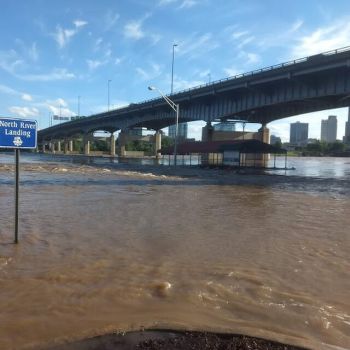Unexpected Changes in Water Level

|
| River flooding near Little Rock, Arkansas.
(Image Source: Wikimedia) |
Water levels on rivers, streams, and lakes can change quickly in a matter of hours or, in rare cases, even minutes. A number of potential factors can cause this ranging from changes in weather and rainfall to man-made releases of water. It is not always possible to anticipate changes in water level from previous rainfall, snowmelt, or other natural processes. As bodies of water change, the behavior of the water flows and currents change as well. Small changes in water level or flow can create different behaviors in the area of a dam, potentially creating unsafe conditions such as much swifter currents or even a hydraulic roller in areas that were previously safe. Just because a river was safe yesterday or even in that same morning, does not mean it will remain so.
Additionally, there are a number of reasons for man-made releases from upstream facilities. Industrial or manufacturing outputs may flush into a river, or an upstream dam may release some water. While some dam releases are preceded by a number of warnings including sirens, lights, and public announcement, it is always important to be aware of potential changes in water levels. Sudden changes can create fast moving and deadly floods or changes in behavior that can overwhelm unsuspecting people recreating or working downstream.
Citations:
Revision ID: 7334
Revision Date: 07/19/2023
